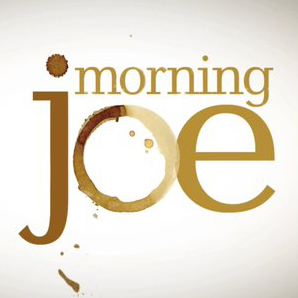Looks Like #WhoTalks Is Changing the Conversation
A panel made up entirely of men dismissed Donald Trump's comments as “unimportant compared to other election issues.”
Two weeks ago following the first presidential debate, in the aftermath of Republican candidate Donald Trump’s comments about former Miss Universe Alicia Machado, a panel made up entirely of men dismissed the incident as “unimportant compared to other election issues.” The all-male, mostly white lineup unsurprisingly failed to draw the connection between misogynistic attitudes and policy (often drafted by a mostly male Congress) that negatively affects women’s health. This is not an unimportant point by any standard, at least not to 53% of the voting public. Without women present in the discussion, the incident, and any possibility for insightful critique that came along with it, was swept to the side and the news cycle moved on.
This week, women and the treatment of women have once again taken center stage after the second presidential debate. A recently leaked tape of Donald Trump in conversation with Billy Bush has sparked conversation about lewd language and sexual assault, and it has dominated news coverage all week, showing no signs of dying down. It has even prompted members of the Republican Party to denounce their own nominee.
What is the difference between the post-debate coverage this time around? Women’s voices.
The Who Talks? project, which tallies the gender balance of pundits on top-rated cable news shows, paid special attention to the hour of coverage immediately following the second presidential debate. For the first time during this election season, we are seeing a glimmer of hope, and balance! CNN and Fox News both came in with averages of 42% and 43% respectively for appearances by women analysts. CNN featured 10 women out of 24 total commentators, and Fox News featured 6 out of 14. This is especially promising for Fox News, whose shows The Kelly File and Fox & Friends have consistently ranked among the lowest for gender representation throughout the Who Talks? project. Disappointedly, MSNBC came in lowest for the night with a mere 22%, featuring only 4 women out of 18 commentators during that first hour.
All three morning news shows tracked by Who Talks? did better than their six-month averages.
To make sure it wasn’t just a fluke, Who Talks? continued to monitor the news, following the usual Monday morning shows. While the data dipped compared to the almost perfectly balanced coverage the night before, all three morning news shows did better than their six-month averages. Fox & Friends, which averaged a mere 20% throughout six months of tracking, came in at 25% on Monday morning. Morning Joe, which has maintained an unnervingly consistent 24% average, came in at 33%. And New Day, which typically fared around 30%, achieved an admirable 41%.
When women are given just as much room as men to comment on the election, the needle moves and the entire conversation changes.
The public gets to hear different lived experiences and nuanced arguments, including the media being called out for how it handles (or chooses not to handle) attacks against women of color, as in the case of Alicia Machado. Without at least 40% women on panels during these last few weeks before the presidential election, without different viewpoints to contribute to and challenge the usual male-dominated conversation, we’re willing to wager that topics as important as these will continue to be sidelined.
Who Talks? shows us that the conversation can change. We just have to keep pushing for it.




